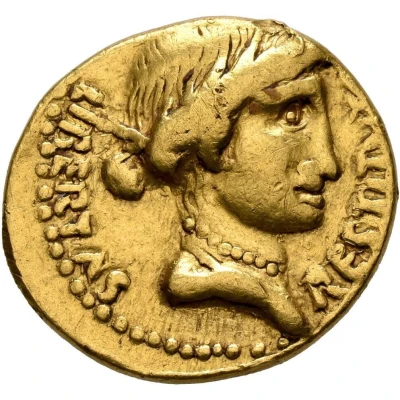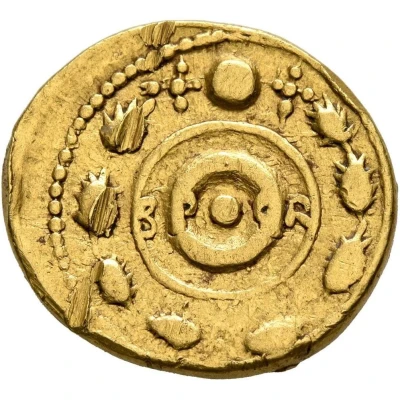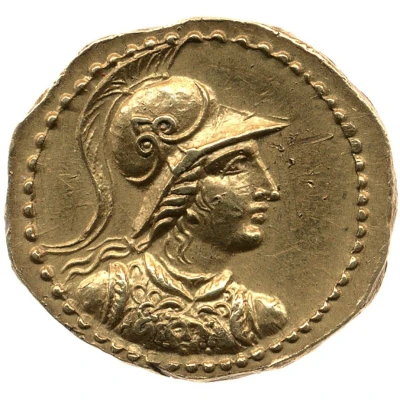


© Leu Numismatik
Aureus S P Q R; Libertas
| Gold | 7.6 g | 18 mm |
| Issuer | Rome › Roman Empire (27 BC - 395 AD) |
|---|---|
| Period | Civil War (68-69) |
| Type | Standard circulation coin |
| Years | 68-69 |
| Value | 1 Aureus = 25 Denarii |
| Currency | Denarius, Reform of Augustus (27 BC – AD 215) |
| Composition | Gold |
| Weight | 7.6 g |
| Diameter | 18 mm |
| Shape | Round (irregular) |
| Technique | Hammered |
| Orientation | Variable alignment ↺ |
| Demonetized | Yes |
| Updated | 2024-10-05 |
| Numista | N#248440 |
|---|---|
| Rarity index | 100% |
Reverse
Legend inscribed on shield within oak-wreath.
Script: Latin
Lettering: S P Q R
Unabridged legend: Senatus Populusque Romanus
Translation: The senate and the Roman people
Comment
Gollnow recorded some 40 civil war denarii with Libertas on the obverse and a Spanish round shield within an oak wreath on the reverse, making it one of the more common issues of the civil war. Clearly Libertas formed a focal point in Galba's early anonymous coinage, an observation that is further corroborated by the striking of aurei with the same types as the present coin. Like all civil war gold coinage, these aurei are extremely rare today: Gollnow recorded only seven examples, two of which are in museums and five of which are in private hands.The emphasis on restoring the liberty of the Roman senate and people runs like a golden thread through Galba's early propaganda. In the early months of his revolt, the future emperor famously refused to pretend to the throne without the consent of the senate, calling himself the legatus Senatus Populique Romani. All of this fits perfectly with his self-representation as an old-fashioned aristocrat, whose adherence to the mos maiorum, the conservative Roman virtues of discipline, hard work, justice, piety, and devotion to public service, was well known. There is, however, also a distinctively local aspect to the present coinage, as the reference to the senate and the people of Rome (S P Q R) on the reverse is set on a Spanish round shield. As such, the issue draws a clear connection between the anonymous promise of restoring the liberty of the Romans by defeating the tyrant Nero on the one hand and the Spanish origin of Galba's revolt on the other.
Interesting fact
The Aureus coin from Rome, minted between 68-69 AD, features an image of Libertas, the Roman goddess of freedom, on one side, and the abbreviation "S P Q R" (Senatus Populusque Romanus) on the other, signifying the unity between the Roman Senate and people.

